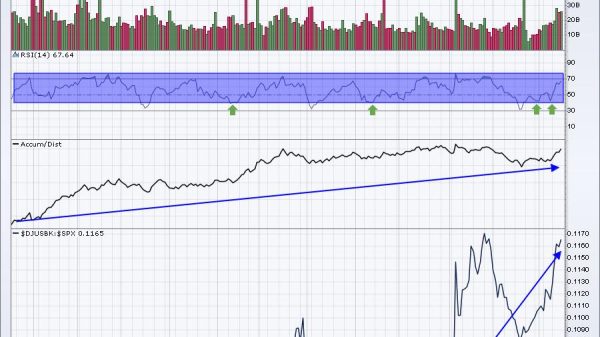Adam N. Michel and Chris Edwards
President-elect Donald Trump campaigned on reforming the federal government with spending cuts and overhauling the bureaucracy. He has tasked Elon Musk and Vivek Ramaswamy with leading a Department of Government Efficiency (DOGE) and delivering a report to him by July 4, 2026. At Cato, we are here to help the effort and have proposed many reforms to shrink federal agencies.
However, Trump and Republicans in Congress can’t wait for the DOGE report to start chopping spending. For one thing, they need spending reductions next year to offset the deficit effects of extending and expanding Trump’s 2017 tax cuts. The economic boost from extending the pro-growth elements of the 2017 tax cuts would be enhanced if paired with eliminating low-value spending programs.
Perhaps more importantly, Republicans must reduce the deficit to avoid a debt-fueled financial crash and prevent another damaging inflation spike. Exit polls from the election reveal that voters were angry about inflation and correctly blamed the massive amounts of new spending passed by President Biden and Congress.
Republicans should learn the inflation lesson—they’ve got to get spending and deficits on a downward trajectory soon after they take office. Another price spike leading up to the 2026 mid-terms could doom their slim congressional majorities.

The good news is that Republicans on Capitol Hill are already talking about spending cut options for 2025. The vehicle for cuts will likely be a reconciliation package, which can be passed with a simple majority in the Senate. Such packages allow cuts to non-Social Security mandatory programs, which currently total about $2.6 trillion in the annual federal budget.
President Reagan enacted major spending cuts in a reconciliation package seven months into his first year—the Omnibus Budget Reconciliation Act of 1981. The cuts totaled $131 billion over three years, the equivalent of $1.1 trillion today when compared as a share of gross domestic product (or about $3.6 trillion over the ten-year budget window). That would be a good-sized package for the GOP to enact next year. Reagan matched his 1981 budget cuts with pro-growth tax reforms signed into law the same day, which is a model that President Trump should follow.
What should Trump and Congress cut? We scoured the budget and assembled 14 recommendations that would cut about $4.8 trillion over 10 years that Republicans should consider for a reconciliation package.
Reform Federal employee retirement. Trump and Musk have made it clear they want to streamline the federal bureaucracy. One place to start is federal employee compensation. Overall, federal employees are paid 17 percent more than similar private-sector workers, and their benefits are 47 percent higher than similar private-sector workers. Bringing federal retirement benefits into line with the private sector could save $237 billion over ten years.
Roll back Biden food stamp increase. In 2021, the USDA updated the Thrifty Food Plan to permanently boost SNAP benefits by 21 percent. Congress should roll back this update to save $190 billion over ten years and conform to the previous convention of cost-neutral administrative changes.
Tighten welfare work requirements. SNAP work requirements currently only apply to able-bodied adults without dependents, and states can waive a portion of their work-eligible caseloads from the requirements. Strengthening work requirements for able-bodied adults would improve economic outcomes and save $171 billion over ten years.
End categorical eligibility. States can automatically enroll individuals in SNAP if they receive even minor benefits from other programs. Repealing this broad-based categorical eligibility would close a loophole that has allowed waste, fraud, and abuse of the program, saving taxpayers as much as $112 billion over ten years.
Cut SNAP junk food subsidies. Trump’s nominee for Secretary of HHS, Robert F. Kennedy Jr., proposes to ban SNAP benefits from being used to buy soda or processed foods. An even larger reform would be to convert SNAP into a fruits-and-vegetables-only program, which would save taxpayers as much as $1 trillion over ten years.
Restrict welfare for immigrants. In 2018, the Trump administration proposed a “public charge rule” to bar entry if the government thinks someone might use welfare. A better approach would be to simply ban access to all means-tested welfare, entitlement programs, and refundable tax credits for individuals who are not citizens. Adopting Rep. Glenn Grothman’s bill to restrict certain Federal assistance could save as much as $1.3 trillion over ten years and even more if expanded to refundable tax credits.
End student loan forgiveness. Biden has stretched the limits of legality in pursuit of forgiving student loans and forcing taxpayers to foot the bill for increasingly out-of-touch universities. Congress should clarify existing laws so repayment plans cannot be manipulated for backdoor forgiveness and end the public service loan forgiveness program, which would save $22 billion over ten years.
Cap federal student loans. Limiting federal student loans will protect students and taxpayers and reduce pressure on tuition inflation. Eliminating PLUS loans for graduate students, limiting other types of loans, and similar reforms could save as much as $185 billion over ten years.
Reduce ACA tax credit abuse. The Affordable Care Act (ACA) premium tax credits directly subsidize health insurance premiums on plans purchased through the government-run Health Insurance Marketplace. When the subsidies are overpaid, there are repayment limits, which encourage income underreporting and other fraud. Removing repayment limits would save taxpayers between $44 billion and over $95 billion over ten years.
Stop Medicaid financing gimmick. Most states levy a tax on healthcare providers, which is a financing gimmick to inflate the federal reimbursement for state Medicaid health care costs. Ending the provider tax loophole would save federal taxpayers more than $500 billion over ten years.
Block grant Medicaid. This health program has grown explosively because the federal government subsidizes state program expansion in an uncontrolled manner. The government could save $600 billion over ten years by converting Medicaid to a block grant and limiting growth to a reasonable 3 percent annual rate.
Expand site-neutral payments. Medicare generally pays more for services performed by hospital outpatient departments than similar services provided in other settings. In 2019, the Trump administration expanded site-neutral payments to a small subset of off-hospital campus clinic visits. Expanding these site-neutral reforms to all services commonly provided in non-hospital settings, as proposed in Trump’s FY 2021 Budget, would save taxpayers more than $100 billion over ten years
Impose stricter limits for bad medical debt. The government reimburses billions of dollars in uncollectible Medicare debts each year, and the HHS Inspector General found that about 15 percent of sampled claims were not compliant with requirements. Stricter limits on Medicare bad debt reimbursement coverage could save between $23 billion and $74 billion over ten years.
Sell Fannie and Freddie. The first Trump administration worked to shore up Fannie Mae and Freddie Mac’s balance sheets before fully privatizing the two government-sponsored enterprises. Congress should instruct the Treasury to sell its $240 billion stake in the companies and amend the charters so that they are truly private and no longer government-sponsored.
Conclusion
Congress should cut spending beyond these modest proposals. But for 2025, these targeted spending cuts, paired with pro-growth tax reform, will put downward pressure on inflation and follow through on Trump’s election promise to streamline the government.
Cutting federal spending is not bad politics, as some people may assume. That was the lesson President Reagan learned from his 49-state landslide victory in 1984 after cutting sensitive programs such as Social Security, Medicare, welfare, and food stamps. Similarly, virtually all the most vigorous spending cutters in the new Republican Congress in the mid-1990s were re-elected in 1996. A far larger political risk for the Republicans is if they don’t cut spending and deficits, and inflation spikes again over the next two years.
Tackling these low-hanging spending reforms will allow the longer-term DOGE project to focus on deeper structural inefficiencies in the federal bureaucracy. A good example is the inefficiency and fraud in the annual federal procurement budget of more than $750 billion.
Next year, the reconciliation process is an opportunity to extend and improve on the previous Trump tax cuts, to cut low-value spending, and drive down the deficit. Spending cuts will open more budget room for Trump and the Republicans to pass lasting pro-growth tax reforms.





























